Fault Detection and Location of IGBT Short-Circuit Failure in Modular Multilevel Converters
Abstract
:1. Introduction
2. Operation Principles, Fault Analysis and Calculation of MMC
2.1. Structure and Control Strategy of MMC
2.2. Fault Characteristics Analysis of SM
2.2.1. T1 Short-Circuit
2.2.2. T2 Short-Circuit
2.3. Capacitor Voltage Calculation
3. Proposed Fault Detection and Location Method for MMC
4. Case Studies
4.1. Fault Characteristics
4.2. Fault Detection
4.3. Fault Location
4.4. Comparison Analysis
5. Conclusions
Author Contributions
Acknowledgments
Conflicts of Interest
Appendix A
| Quantity | Value |
|---|---|
| DC nominal voltage (Udc) | ±20 kV |
| Number of SMs per arm (N) | 20 |
| Power transmission (P) | 20 MW |
| Arm inductor (L0) | 15 mH |
| SM capacitance (C0) | 6 mF |
| AC line voltage (Vac) | 10 kV |
| Loss resistance (R0) | 0.1 Ω |
| SM capacitor voltage | 2 kV |
| equivalent on-resistance (R1, R2) | 0.01 Ω |
References
- Debnath, S.; Qin, J.; Bahrani, B.; Saeedifard, M.; Barbosa, P. Operation, Control, and Applications of the Modular Multilevel Converter: A Review. IEEE Trans. Power Electron. 2015, 30, 37–53. [Google Scholar] [CrossRef]
- Perez, M.A.; Bernet, S.; Rodriguez, J.; Kouro, S.; Lizana, R. Circuit Topologies, Modeling, Control Schemes, and Applications of Modular Multilevel Converters. IEEE Trans. Power Electron. 2015, 30, 4–17. [Google Scholar] [CrossRef]
- Nami, A.; Liang, J.; Dijkhuizen, F.; Demetriades, G.D. Modular Multilevel Converters for HVDC Applications: Review on Converter Cells and Functionalities. IEEE Trans. Power Electron. 2015, 30, 18–36. [Google Scholar] [CrossRef]
- Harnefors, L.; Antonopoulos, A.; Norrga, S.; Angquist, L.; Nee, H.P. Dynamic Analysis of Modular Multilevel Converters. IEEE Trans. Ind. Electron. 2013, 60, 2526–2537. [Google Scholar] [CrossRef]
- Gebreel, A.A.; Xu, L. Power quality and total harmonic distortion response for MMC with increasing arm inductance based on closed loop–needless PID controller. Electr. Power Syst. Res. 2016, 133, 281–291. [Google Scholar] [CrossRef]
- Rohner, S.; Bernet, S.; Hiller, M.; Sommer, R. Modulation, Losses, and Semiconductor Requirements of Modular Multilevel Converters. IEEE Trans. Ind. Electron. 2010, 57, 2633–2642. [Google Scholar] [CrossRef]
- Wu, J.; Wang, Z.X.; Xu, L.; Wang, G.Q. Key technologies of VSC–HVDC and its application on offshore wind farm in China. Renew. Sustain. Energy Rev. 2014, 36, 247–255. [Google Scholar] [CrossRef]
- Jiang, B.; Wang, Z. The key technologies of VSC–MTDC and its application in China. Renew. Sustain. Energy Rev. 2016, 62, 297–304. [Google Scholar]
- Shao, S.; Watson, A.J.; Clare, J.C.; Wheeler, P.W. Robustness Analysis and Experimental Validation of a Fault Detection and Isolation Method for the Modular Multilevel Converter. IEEE Trans. Power Electron. 2016, 31, 3794–3805. [Google Scholar] [CrossRef] [Green Version]
- Sujil, A.; Choudhary, S.; Verma, J.; Kumar, R. Agent based intelligent fault detection, isolation and restoration in smart power system. In Proceedings of the 2016 IEEE Students’ Conference on Electrical, Electronics and Computer Science (SCEECS), Bhopal, India, 5–6 March 2016; pp. 1–6. [Google Scholar]
- Hwang, I.; Kim, S.; Kim, Y.; Seah, C.E. A Survey of Fault Detection, Isolation, and Reconfiguration Methods. IEEE Trans. Control Syst. Technol. 2010, 18, 636–653. [Google Scholar] [CrossRef]
- Lu, B.; Sharma, S.K. A Literature Review of IGBT Fault Diagnostic and Protection Methods for Power Inverters. IEEE Trans. Ind. Appl. 2009, 45, 1770–1777. [Google Scholar]
- Yang, S.; Bryant, A.; Mawby, P.; Xiang, D.; Ran, L.; Tavner, P. An Industry–Based Survey of Reliability in Power Electronic Converters. IEEE Trans. Ind. Appl. 2011, 47, 1441–1451. [Google Scholar] [CrossRef]
- Salimian, H.; Iman–Eini, H.; Farhangi, S. Open–circuit fault detection and location in Modular Multilevel Converter. In Proceedings of the 6th Power Electronics, Drive Systems & Technologies Conference (PEDSTC2015), Tehran, Iran, 3–4 February 2015; pp. 383–388. [Google Scholar]
- Haghnazari, S.; Khodabandeh, M.; Zolghadri, M.R. Fast fault detection method for modular multilevel converter semiconductor power switches. IET Power Electron. 2016, 9, 165–174. [Google Scholar] [CrossRef]
- Shao, S.; Wheeler, P.W.; Clare, J.C.; Watson, A.J. Fault Detection for Modular Multilevel Converters Based on Sliding Mode Observer. IEEE Trans. Power Electron. 2013, 28, 4867–4872. [Google Scholar] [CrossRef] [Green Version]
- Li, B.; Shi, S.; Wang, B.; Wang, G.; Wang, W.; Xu, D. Fault Diagnosis and Tolerant Control of Single IGBT Open–Circuit Failure in Modular Multilevel Converters. IEEE Trans. Power Electron. 2016, 31, 3165–3176. [Google Scholar] [CrossRef]
- Deng, F.; Chen, Z.; Khan, M.R.; Zhu, R. Fault Detection and Location Method for Modular Multilevel Converters. IEEE Trans. Power Electron. 2015, 30, 2721–2732. [Google Scholar] [CrossRef]
- Chokhawala, R.S.; Catt, J.; Kiraly, L. A discussion on IGBT short-circuit behavior and fault protection schemes. IEEE Trans. Ind. Appl. 1995, 31, 256–263. [Google Scholar] [CrossRef] [Green Version]
- Barnes, M.J.; Blackmore, E.; Wait, G.D.; Lemire-Elmore, J.; Rablah, B.; Leyh, G.; Nguyen, M.N.; Pappas, C. Analysis of High–Power IGBT Short Circuit Failures. IEEE Trans. Plasma Sci. 2005, 33, 1252–1261. [Google Scholar] [CrossRef]
- Yazdani, A.; Sepahvand, H.; Crow, M.L.; Ferdowsi, M. Fault Detection and Mitigation in Multilevel Converter STATCOMs. IEEE Trans. Ind. Electron. 2011, 58, 1307–1315. [Google Scholar] [CrossRef]
- Brando, G.; Dannier, A.; del Pizzo, A.; Rizzo, R. Quick identification technique of fault conditions in cascaded H–Bridge multilevel converters. In Proceedings of the 2007 International Aegean Conference on Electrical Machines and Power Electronics, Bodrum, Turkey, 10–12 September 2007; pp. 491–497. [Google Scholar]
- Shahbazi, M.; Zolghadri, M.R.; Poure, P.; Saadate, S. Fast short circuit power switch fault detection in cascaded H–bridge multilevel converter. In Proceedings of the 2013 IEEE Power & Energy Society General Meeting, Vancouver, BC, Canada, 21–25 July 2013; pp. 1–5. [Google Scholar]
- Lee, J.B.; Hyun, D.S. Gate Voltage Pattern Analyze for Short-circuit Protection in IGBT Inverters. In Proceedings of the 2007 IEEE Power Electronics Specialists Conference, Orlando, FL, USA, 17–21 June 2007; pp. 1913–1917. [Google Scholar]
- Lihua, C.; Peng, F.Z.; Cao, D. A smart gate drive with self–diagnosis for power MOSFETs and IGBTs. In Proceedings of the 2008 Twenty–Third Annual IEEE Applied Power Electronics Conference and Exposition, Austin, TX, USA, 24–28 February 2008; pp. 1602–1607. [Google Scholar]
- Yinglin, X.; Zheng, X. On the Bipolar MMC–HVDC Topology Suitable for Bulk Power Overhead Line Transmission: Configuration, Control, and DC Fault Analysis. IEEE Trans. Power Deliv. 2014, 29, 2420–2429. [Google Scholar]
- Wang, S.S.; Zhou, X.X.; Tang, G.F.; He, Z.; Teng, L.; Bao, H.L. Analysis of submodule overcurrent caused by dc pole–to–pole fault in modular multilevel converter HVDC system. Proc. CSEE 2011, 31, 1–7. (In Chinese) [Google Scholar]
- Silva, M.D.; Coury, D.V.; Oleskovicz, M.; Segatto, E.C. Combined solution for fault location in three–terminal lines based on wavelet transforms. IET Gener. Trans. Dis. 2010, 4, 94–103. [Google Scholar] [CrossRef]
- Lin, S.; He, Z.Y.; Li, X.P.; Qian, Q.Q. Travelling wave time–frequency characteristic–based fault location method for transmission lines. IET Gener. Trans. Dis. 2012, 6, 764–772. [Google Scholar] [CrossRef]
- Azizi, S.; Sanaye–Pasand, M.; Abedini, M.; Hasani, A. A Traveling–Wave–Based Methodology for Wide–Area Fault Location in Multi–terminal DC Systems. IEEE Trans. Power Deliv. 2014, 29, 2552–2560. [Google Scholar] [CrossRef]
- Liu, X.; Osman, A.H.; Malik, O.P. Hybrid Traveling Wave/Boundary Protection for Monopolar HVDC Line. IEEE Trans. Power Deliv. 2009, 24, 569–578. [Google Scholar] [CrossRef]

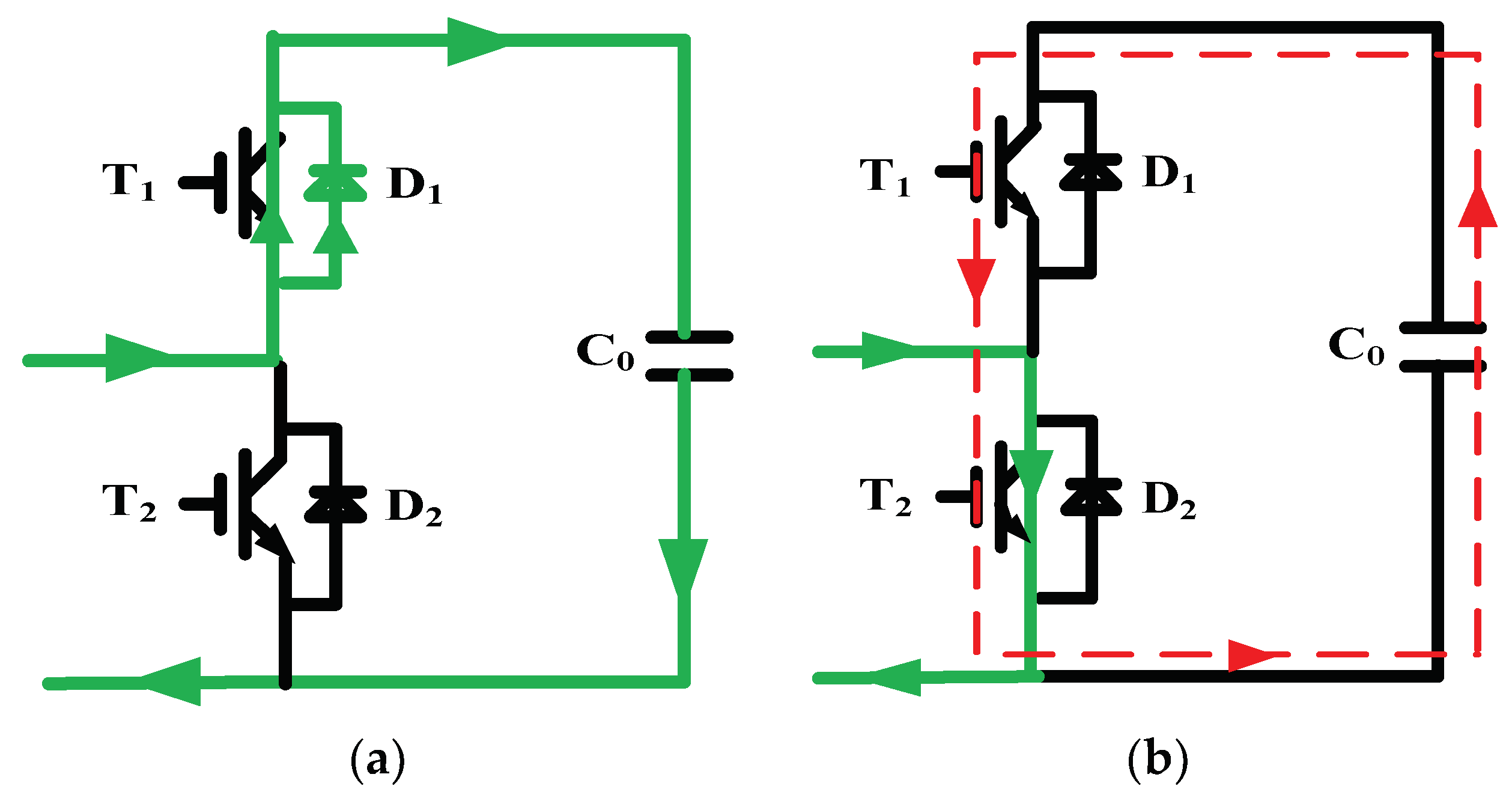

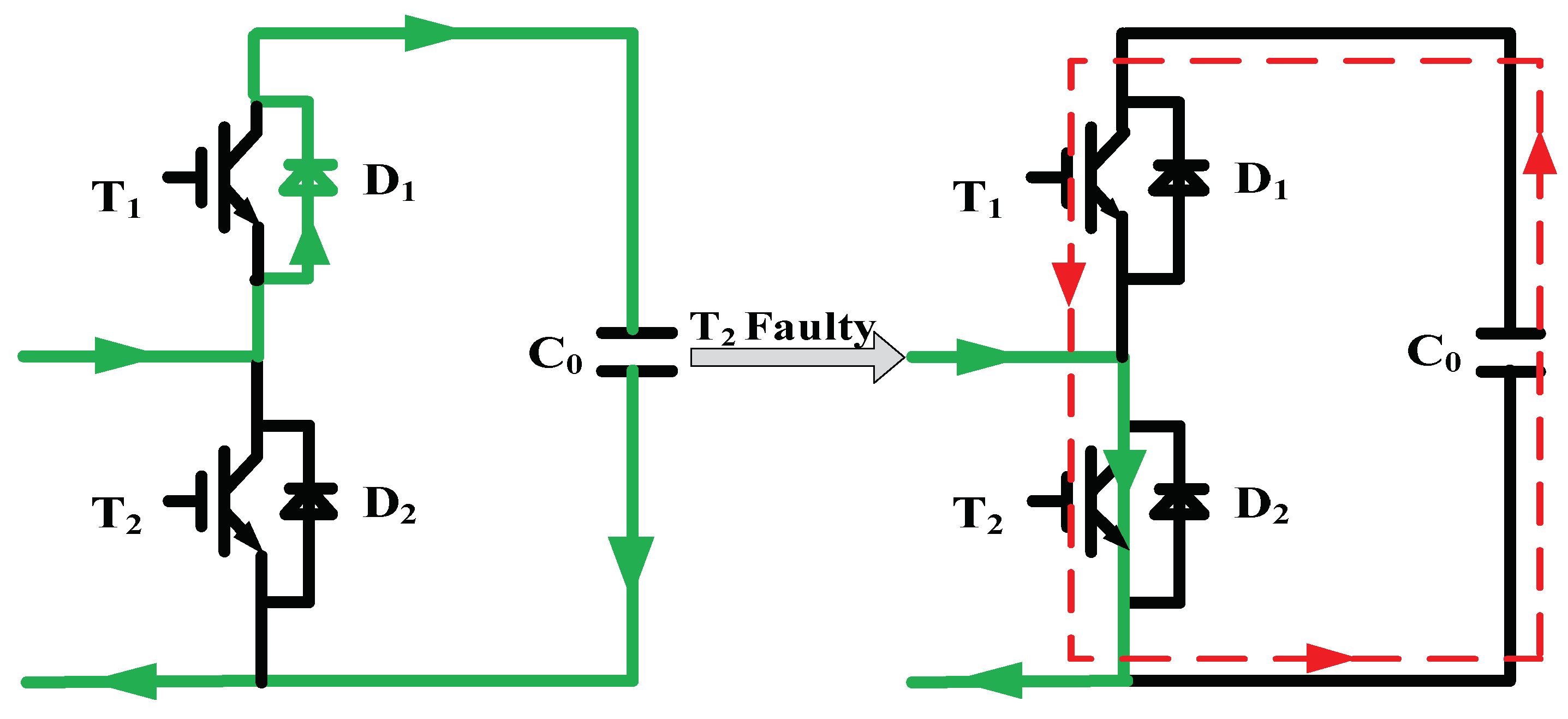
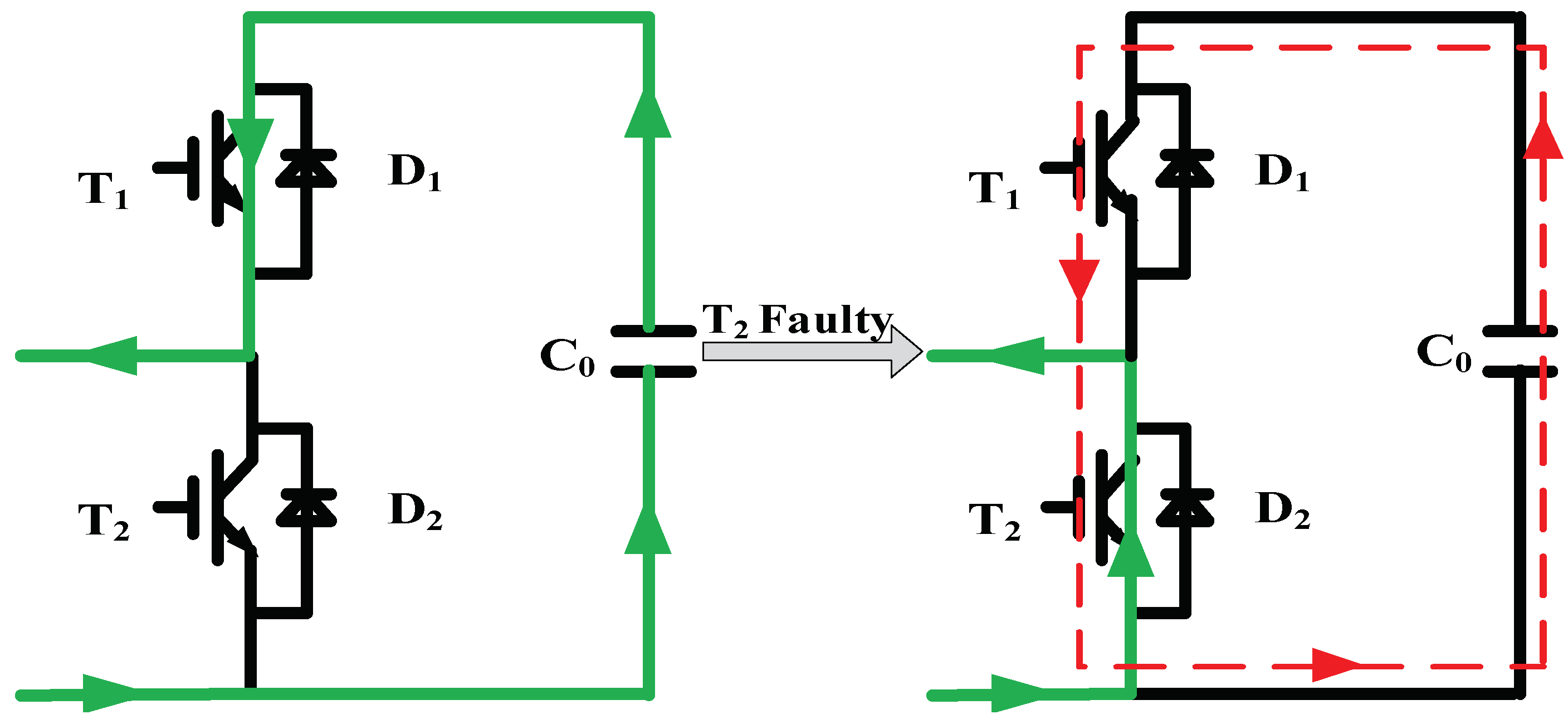
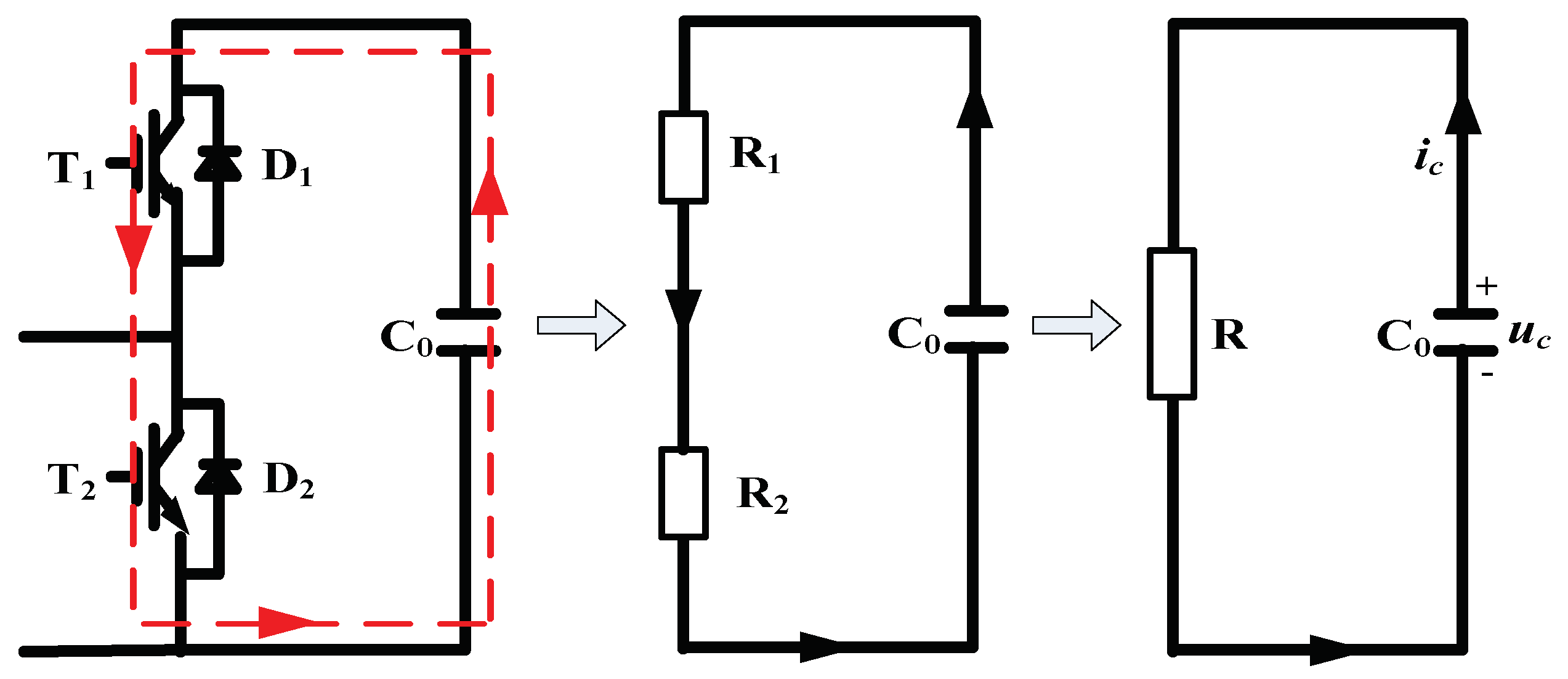
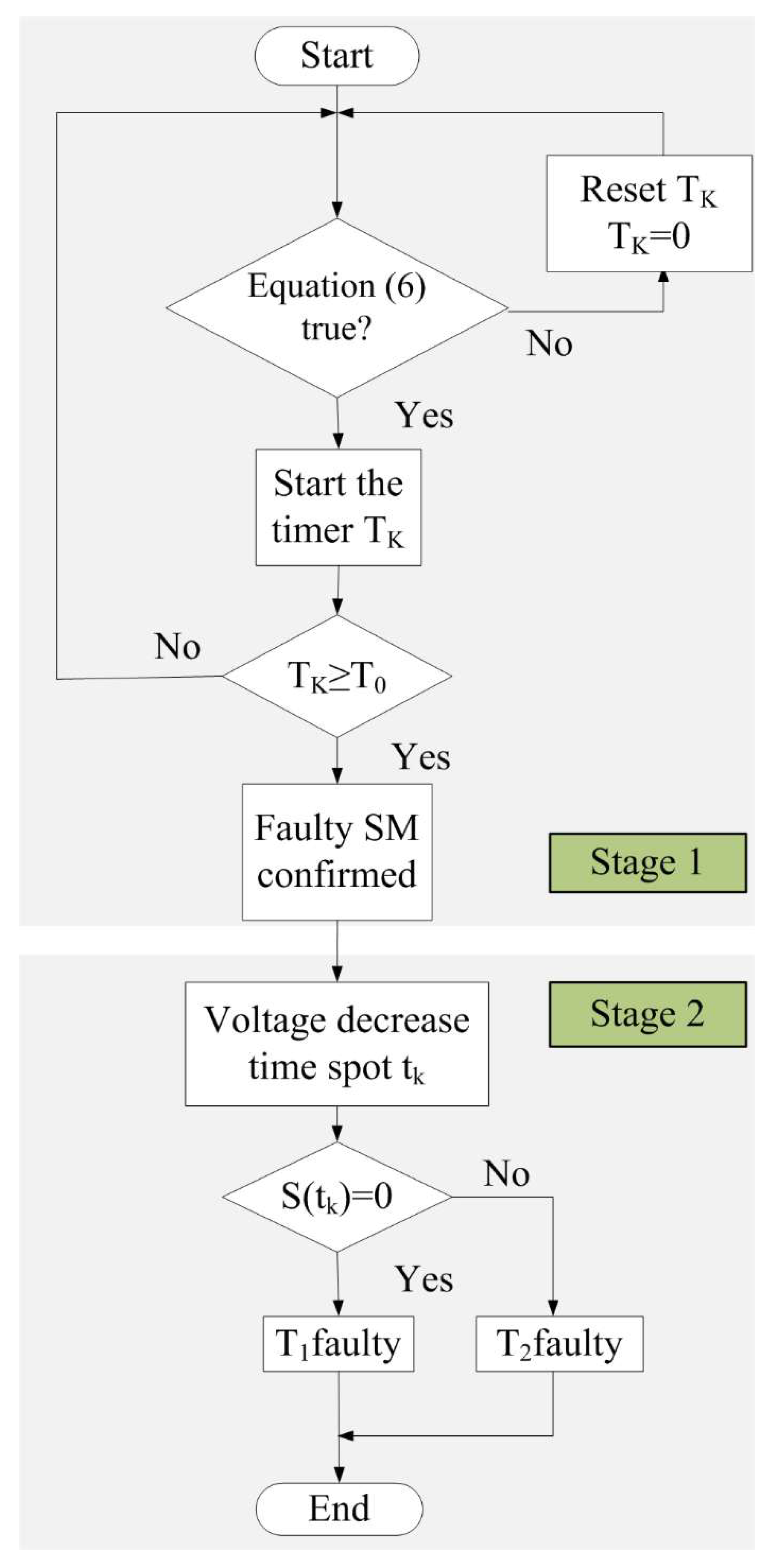
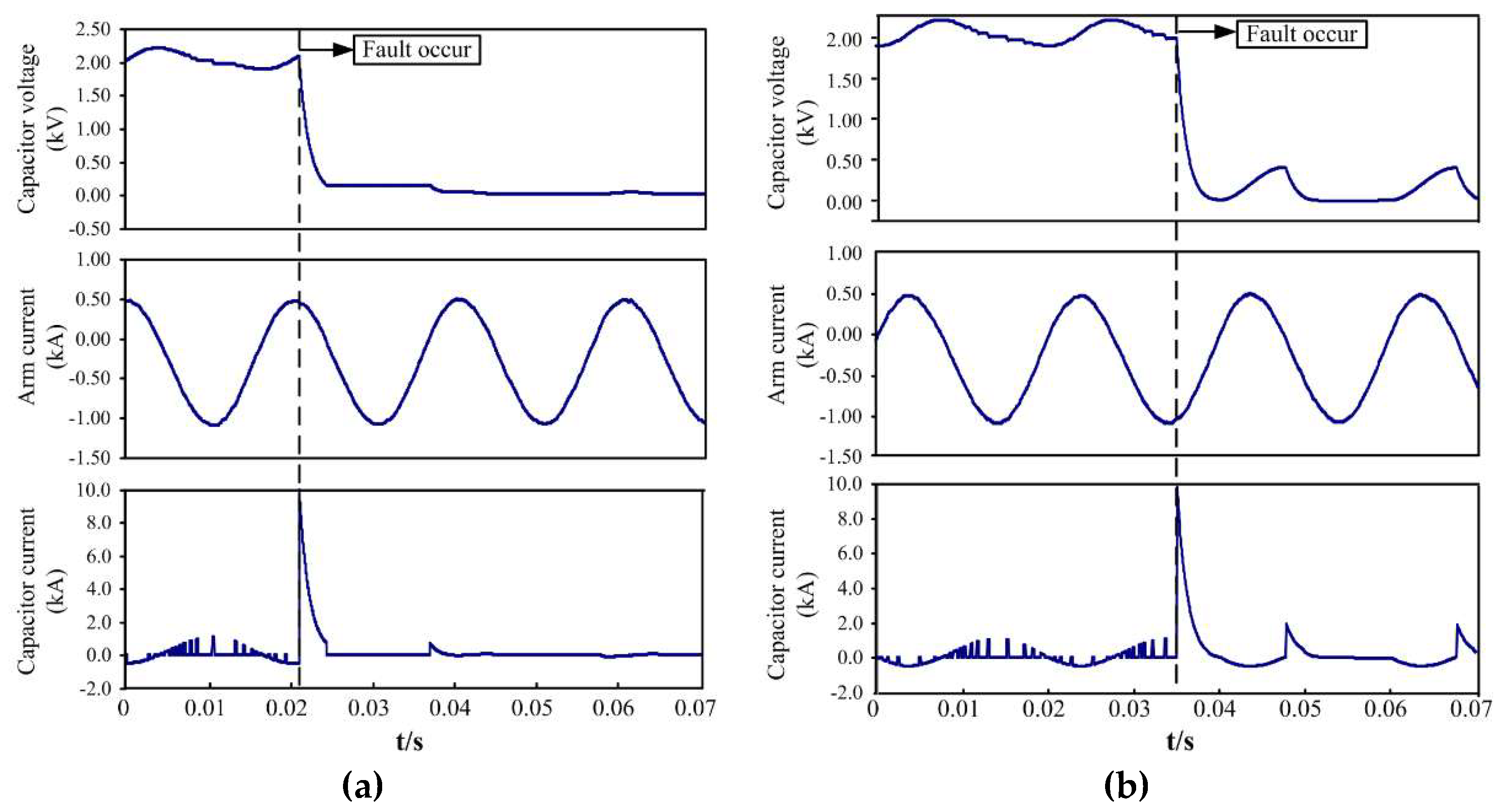
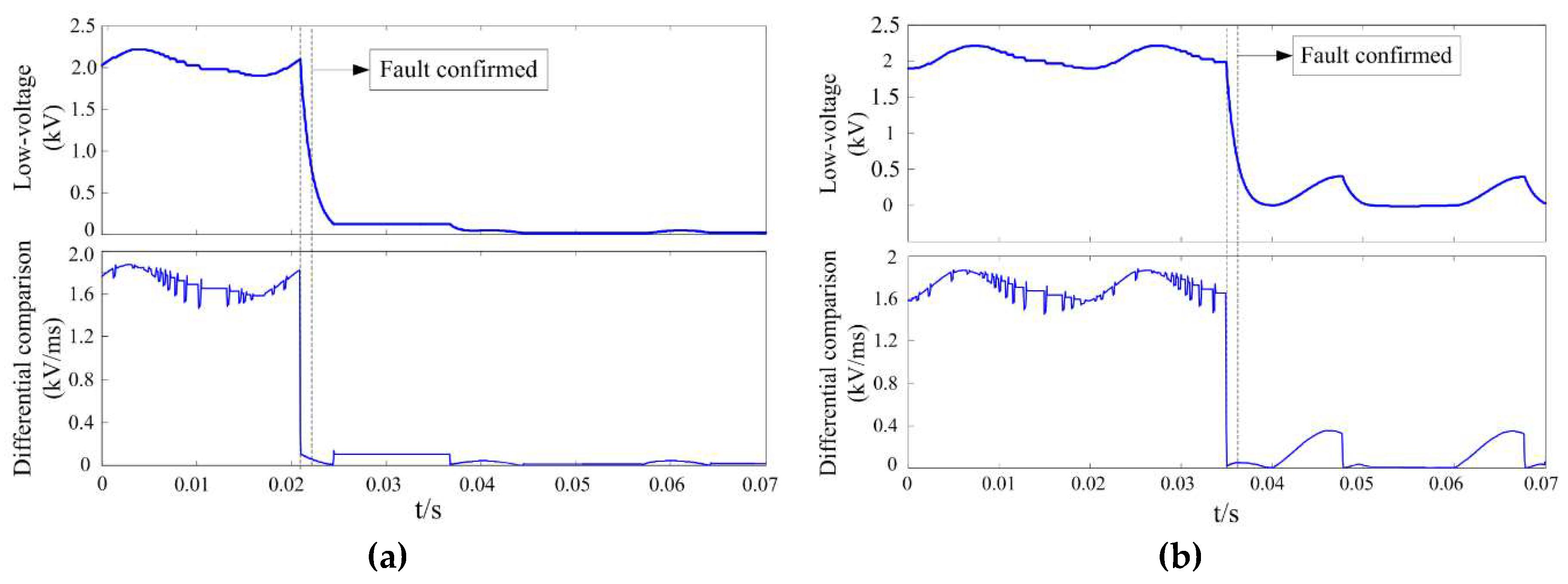

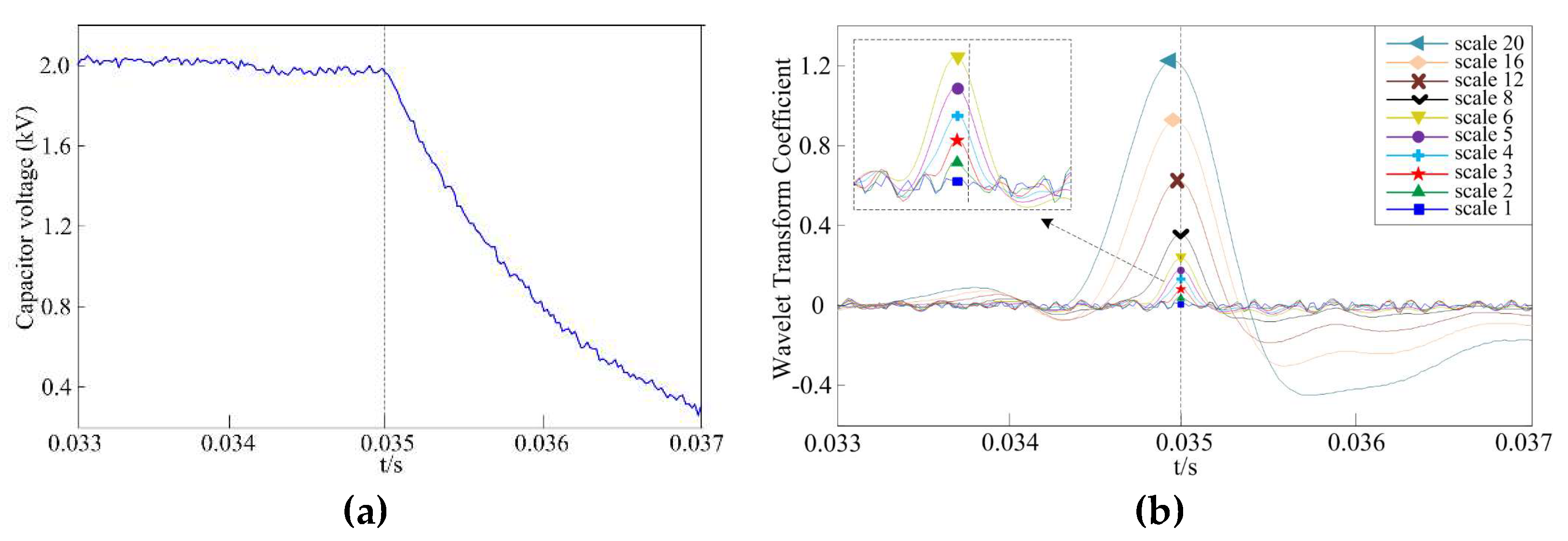
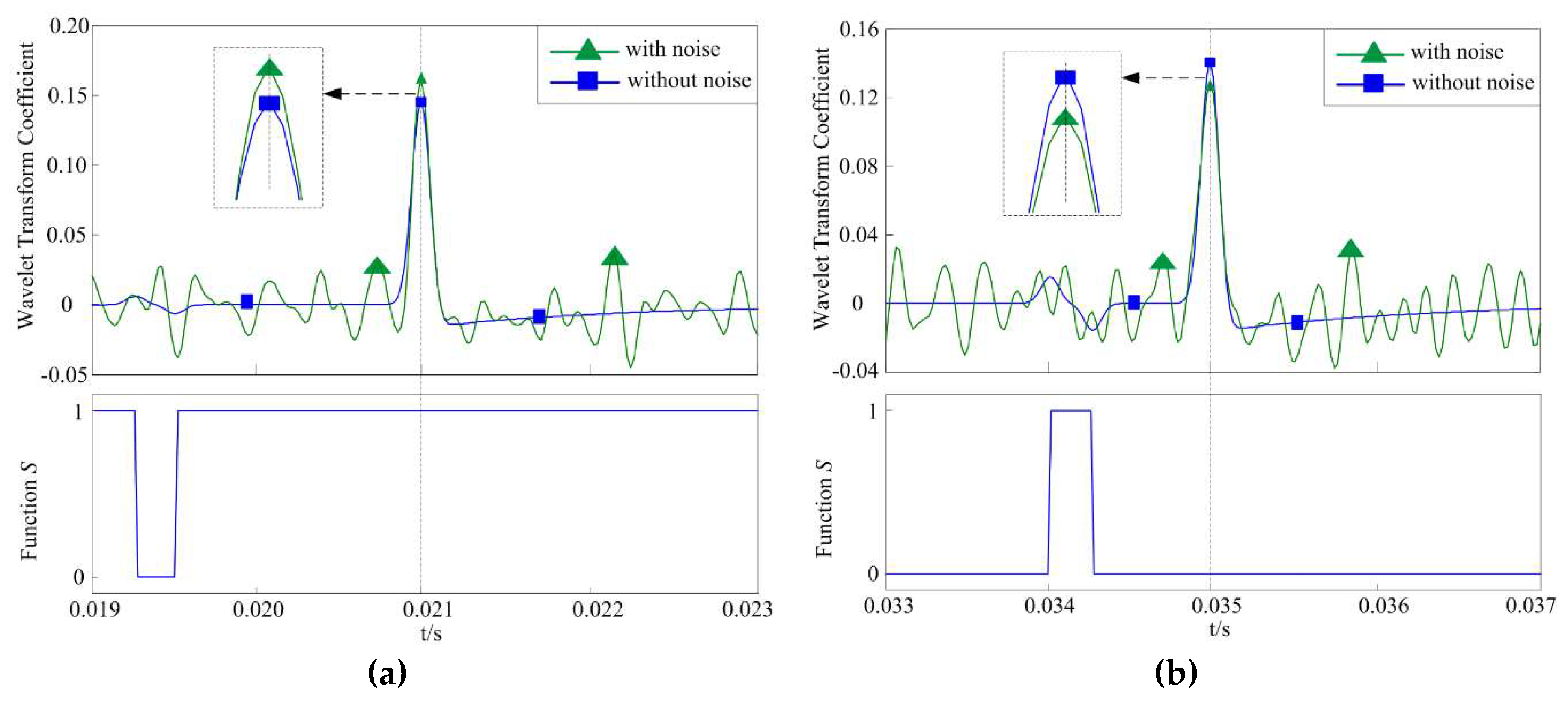
| Reference | Requires | Complexity | Detection Time |
|---|---|---|---|
| [21] | output voltage and gate signal | simple calculation | about 1 cycle |
| [22,23] | phase voltage | complex model and additional sensors | numbers of sampling intervals |
| [24,25] | gate voltage or current | additional sensors and circuits | tens of microseconds |
| Fault IGBT | SM State | S | iarm | Capacitor State |
|---|---|---|---|---|
| T1 | ON | 1 | >0 | Normal |
| <0 | Normal | |||
| OFF | 0 | >0 | Short-circuit | |
| <0 | Short-circuit | |||
| T2 | ON | 1 | >0 | Short-circuit |
| <0 | Short-circuit | |||
| OFF | 0 | >0 | Normal | |
| <0 | Normal |
© 2018 by the authors. Licensee MDPI, Basel, Switzerland. This article is an open access article distributed under the terms and conditions of the Creative Commons Attribution (CC BY) license (http://creativecommons.org/licenses/by/4.0/).
Share and Cite
Jiang, B.; Gong, Y.; Li, Y. Fault Detection and Location of IGBT Short-Circuit Failure in Modular Multilevel Converters. Energies 2018, 11, 1492. https://doi.org/10.3390/en11061492
Jiang B, Gong Y, Li Y. Fault Detection and Location of IGBT Short-Circuit Failure in Modular Multilevel Converters. Energies. 2018; 11(6):1492. https://doi.org/10.3390/en11061492
Chicago/Turabian StyleJiang, Bin, Yanfeng Gong, and Yan Li. 2018. "Fault Detection and Location of IGBT Short-Circuit Failure in Modular Multilevel Converters" Energies 11, no. 6: 1492. https://doi.org/10.3390/en11061492




